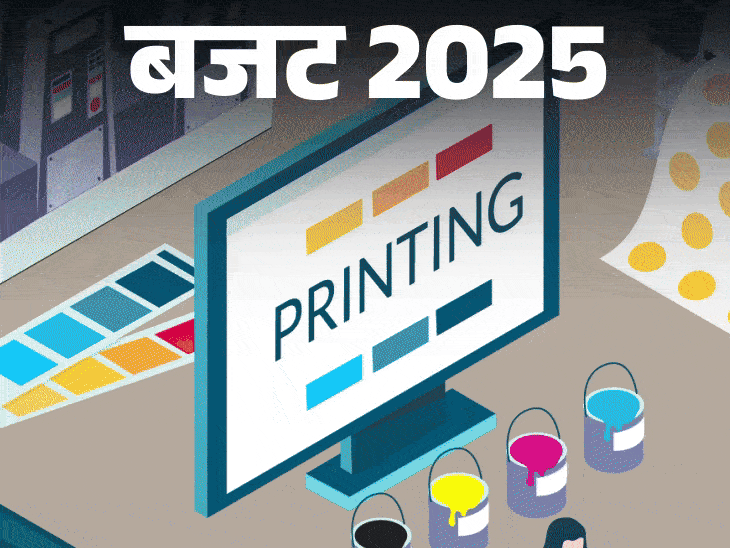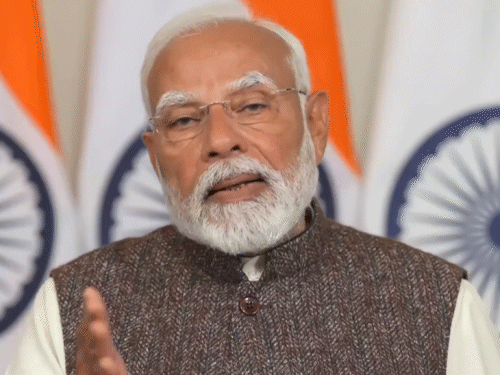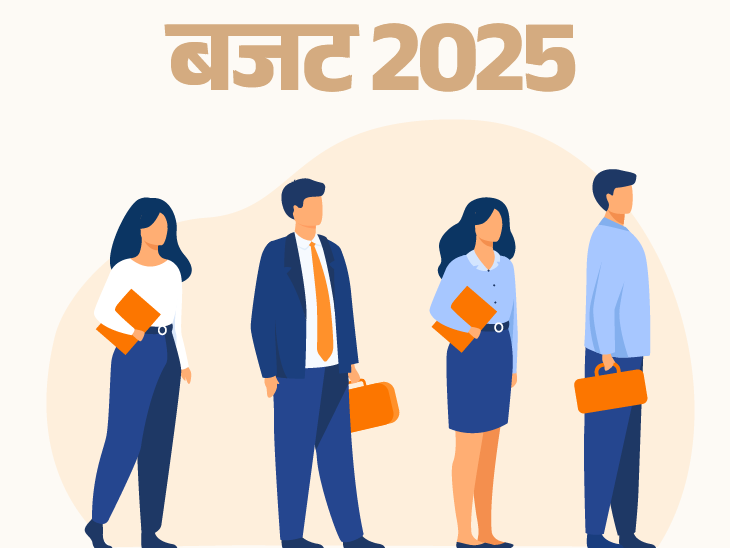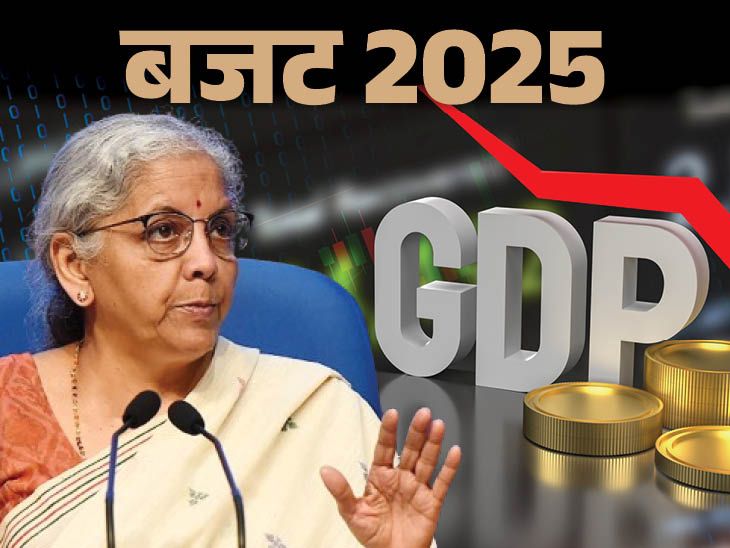There was a tradition of presenting the budget at 5 pm on the last day of February during the British. Actually, India’s time is 4 hours 30 minutes ahead of the British time. Therefore, the British officers had fixed the time to present the budget for their convenience at 5 pm.
,
139 years later, in 1999, the Atal government broke into this tradition and the budget started being presented at 11 am. Why did the Atal government do this? Will know the answers to 9 such interesting questions …
Question 1: Are the budget making team closed in the basement? answer: Yes, this is true. Before the presentation of the budget in the Lok Sabha, about 100 officers and employees involved in making it are kept locked in the basement of the Finance Ministry for 7 days. Everyone’s mobile phones are taken. During this time neither they can meet anyone nor go home. The aim is to keep the budget confidential till the Finance Minister’s speech on 1 February i.e. February 1, so that black marketing and profiteering can be stopped. Think, if someone comes to know that the tax on a particular industry is going to be reduced, then he will buy shares of companies related to that industry in large quantities. On the other hand, as soon as this announcement is made in the budget, the shares of that industry will gain fast and that person will earn a big profit. At the same time, this opportunity will be lost from common investors.
During this lock-in of the officers, the budget copies are printed in the printing press in the basement of the Ministry of Finance. Before 1950, the budget copies were printed in a government press in Rashtrapati Bhavan. In 1950, Finance Minister John Mathai leaked some documents from this press. Mathai was accused of helping some big industrialists. After this, the budget was printed in the second government press on Minto Road, Delhi.
After 30 years, in 1980, this press was shifted to the basement of the North Block i.e. Finance Ministry. In the same year, the staff involved in finalizing the budget and its printing was closed in the basement for two weeks. This process has been in progress since then.
From 2021-22, digital budget started to be released on ‘Union Budget Mobile App’. Due to this, the requirement of the printed copies of the budget was greatly reduced. As a result, the lock-in period of the staff also became 1 week instead of 2.
Question 2: What is pudding ceremony, why does it happen every year before the budget? answer: Halwa is discussed in the news a few days before the budget is presented. Pictures of Finance Minister start coming with Halwa embroidery. Actually, there is a tradition to start any auspicious work in India with sweet. Creating a year -long budget of the country is also considered auspicious. Therefore, pudding is made before the printing of the budget starts in the press of North Block.
The Finance Minister serves pudding to the staff with his hand. The staff’s lock-in period begins immediately after this ‘pudding ceremony’. Therefore, Halwa Ceremony is also considered a way to express gratitude to these people. This time the pudding was held on 24 January.

Finance Minister Nirmala Sitharaman served pudding before the budget in July 2024. This time photos of Halwa Ceremony have not been made public.
Question 3: Why is the general budget presented on 1 February only? answer: From the time of the British to 2016, the budget was presented on February 29, if the last working day of February i.e. 28 February or if it is a leap year. On 21 January 2017, the Modi government gave the date of presenting the general budget to 1 February. The then Finance Minister Arun Jaitley had given two reasons behind this-
1. Lack of time in implementing budget: It takes time till May from presenting the budget to passing and implementing it from Parliament. Jaitley said that introducing it on February 1, instead of February 28, will get more time to implement new changes and rules of the budget.
2. Missing Railway Budget in General Budget: In 2017, the Railway Budget was merged into the General Budget. According to Jaitley, this requires more time to implement the general budget.
Question 4: Now the budget is presented at 11 o’clock, whereas before this time was 5 pm, why? answer: The budget was presented at 5 pm on the last day of February during the British. As we said in the beginning, at that time it was 12:30 in the Britain. This used to facilitate British officials.
In 1999, Finance Minister of Atal Government Yashwant Sinha presented the General Budget at 11 am. Then Sinha said- ‘India is no longer the British colony, he can decide his time-table himself. This will give a full day to discuss the budget in Parliament. Since then, the general budget is presented at 11 am.

Finance Minister Yashwant Sinha, who went to present the budget for the first time on 28 February 1999, at 11 am.
Question 5: The new year starts from January 1, but why does the budget from April 1 to March 31? answer: The financial year in India is from April 1 to March 31. Therefore, in the budget, according to the financial year, accounts are kept from April 1 to March 31. Why the financial year starts from April 1, there are 2 reasons behind it-
- The crop cycle begins around April: 18% to 20% of India’s economy still comes from farming. At the same time, harvesting of rabi crops like wheat starts from February-March. In such a situation, money starts coming to people associated with farming from March. Accordingly, a large cycle of the economy also starts from March. This is the reason why the financial year in India starts from March 1.
- The British financial year also starts from April: The new financial year begins in Britain on 6 April and ends on 5 April. The British had implemented this system in India till independence.
In 2016, a committee headed by former Chief Economic Advisor Shankar Acharya suggested to start India’s financial year from January 1. It was also discussed in January 2019 that the financial year can be changed now, but the government has not taken any decision on it so far.
Question 6: Why does the Finance Minister bring the budget documents in the red cover (book) for the budget speech? answer: The first budget of Azad India was introduced on 26 November 1947 by RK Shanmukham Chetty, the first Finance Minister of India. He reached Parliament by placing a budget in a leather brown briefcase like the British. Till 2018, the tradition of ‘leather briefcase’ continued.
This tradition was broken by Finance Minister Nirmala Sitharaman. On 5 July 2019, Nirmala first reached Parliament by placing the budget in a red cloth cover instead of briefcase.
The national symbol ‘Ashoka Pillar’ was made on this cover. The then Chief Economic Advisor Krishnamurthy Subramanian called this change a symbol of ‘freedom from Western slavery’.
Red clothes are also used in religious rituals of Indian majority Hindus. Krishnamurthy said, ‘This is in the Indian tradition. This budget does not book.
On 1 February 2021, Finance Minister Sitharaman presented the ‘paperless budget’. She reached Parliament by placing a tablet in a red cloth cover.

Finance Minister Nirmala Sitharaman reached Parliament for the first time on 5 July 2019 with a budget in a red cloth cover.
Question 7: Common bills can also be introduced in Rajya Sabha, but why present the budget in the Lok Sabha itself? answer: Any common bill can also be introduced in Rajya SabhaBut this is not the case in the budget. Actually, India is a democratic country, whose In the Lok Sabha, the people of the country are directly elected by the people of the country. Since there is public money in the government treasury, the government has to deposit money in the government treasury through tax, etc.
For this, the government has to pass two bills from the Lok Sabha- Finance Bill for depositing money in the treasury and Application bill to withdraw. Both these bills are related to money and are included in the budget, hence the budget is called ‘Money Bill’. That is why money bills can be introduced only in Lok Sabha.
However, the budget passes from the Lok Sabha and also goes to the Rajya Sabha, but if the Rajya Sabha suggests any change, then the Lok Sabha is not obliged to accept it. That is, even if a government does not have a majority in the Rajya Sabha, it will not have any problem in passing the budget.
Question 8: Generally after the bill is passed, the President gives approval, but why is it necessary in the case of budget already? answer: It is necessary to get the permission of the President in advance to ensure that the government only introduce the money bill. This means that any MP of Parliament who is not included in the government cannot present a money bill or budget.
However, the President does not have the right to make any changes in the budget. His role is limited to receiving and accepting the budget only.
Question 9: Railway budget used to be presented separately, now why has it been included in the general budget? answer: From 1924 to 2016, the Railway Budget was different from the general budget. There were two major arguments of governments behind this-
- Railways is the largest ministry in the country. The most common people and employees are connected in it.
- Railways are very important for the progress, security and keeping the country united. Therefore, it should be focused separately.
For the first time in 1924, the Railway Budget was separated from the general budget by the British. Then a railway committee named Aquarth recommended the nationalization of the railway in India and to unite different private companies.
In September 2016, the Modi government broke the 92 -year -old tradition. The then Finance Minister Arun Jaitley had said, ‘Railway budget is much smaller than the general budget. So offering it separately is just like performing a ritual.
,
Read this news related to budget too …
Tax-free can be earned up to ₹ 10 lakh: New income tax slab can also be received in the budget, income tax-free of up to ₹ 7.75 lakh

Union Finance Minister Nirmala Sitharaman can give a big relief to the income tax payers while presenting the budget of 2025-26 on 1 February. According to sources, the government can give tax exemption to income tax payers earning up to Rs 20 lakh. Read full news here …



